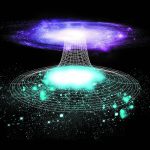Key Takeaways:
- Scientists have detected repetitive radio signals originating from a distant galaxy located 1.5 billion light years away, marking only the second time such phenomena have been observed.
- These fast radio bursts (FRBs) have perplexed researchers for years, with various theories ranging from exploding stars to potential alien transmissions, but their origins remain enigmatic.
- The recent discovery of repeated bursts, including one that repeated six times, offers hope for unraveling the mysteries surrounding FRBs and understanding their sources.
- The Canadian Hydrogen Intensity Mapping Experiment (CHIME) in British Columbia played a crucial role in detecting these bursts, surpassing expectations by capturing a vast trove of data within a short timeframe.
- The detection of low-frequency radio waves from these bursts expands our understanding of their sources and the environments they originate from, providing valuable pieces to the cosmic puzzle.
Scientists have stumbled upon a cosmic enigma: repetitive bursts of radio signals emanating from the depths of space. This extraordinary finding, occurring a staggering 1.5 billion light years away, marks a significant advancement in our understanding of fast radio bursts (FRBs), yet leaves us grappling with a multitude of unanswered questions.
Fast radio bursts, characterized by fleeting flashes lasting mere milliseconds, have long tantalized astronomers with their elusive nature. From speculations of stellar cataclysms to the far-reaching imaginations of extraterrestrial communications, the origins of these enigmatic bursts have remained shrouded in mystery, offering little tangible evidence to decipher their cryptic messages.
What sets this recent revelation apart is the observation of repetitive bursts, a rare occurrence previously witnessed only once before. Among the 13 bursts detected within a concise three-week window, one sequence of signals repeated six times, emanating from what appears to be a consistent source within the distant galaxy. This newfound repetition not only deepens the cosmic conundrum but also presents a promising avenue for unraveling the underlying mechanisms governing these celestial phenomena.
Ingrid Stairs, an astrophysicist at UBC and member of the CHIME team, highlights the significance of this discovery, emphasizing the potential it holds for expanding our comprehension of these cosmic puzzles. The existence of multiple repeating signals hints at the presence of a substantial population of such bursts, offering a rich tapestry of data for researchers to scrutinize in their quest for understanding.
Moreover, the detection of low-frequency radio waves accompanying these bursts unveils a new facet of their nature. Contrary to previous models, which posited limitations on the frequency range of these signals, the observations challenge existing assumptions, shedding light on the diverse frequencies they can produce and the environments they traverse before reaching Earth.
Arun Naidu of McGill University underscores the importance of these findings, noting the implications for our understanding of the sources and environments giving rise to these enigmatic signals. The remarkable capabilities of CHIME, surpassing expectations by capturing signals at frequencies previously deemed inaccessible, open new avenues for exploration into the origins of FRBs and the cosmic landscapes they traverse.
Tom Landecker from the National Research Council of Canada echoes this sentiment, emphasizing the incremental progress made in piecing together the cosmic puzzle. While the discovery of repetitive radio bursts marks a significant milestone, it represents merely a fraction of the broader quest to decipher the mysteries of the universe and unlock the secrets concealed within the depths of space.
In conclusion, the detection of repetitive radio waves from a distant galaxy offers a tantalizing glimpse into the cosmic symphony playing out across the universe. As researchers delve deeper into this celestial enigma, armed with newfound data and cutting-edge technology, the quest to unravel the mysteries of fast radio bursts embarks on an exciting journey towards unlocking the secrets of the cosmos.


